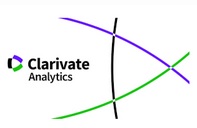Physical disgust, germ aversion and antifat attitudes: the mediational effect of perceived controllability of weight
Abstract
Antifat attitudes refer to stereotyping based on people’s weight. A potential explanation for the strong negative attitudes toward obese individuals relates to people’s emotional reactions. In this study, conducted with 373 female students, it is suggested that physical disgust, germ aversion and perceived controllability of weight play a central role in explaining the individual differences that exist in antifat attitudes. Our results showed a positive relationship between physical disgust and germ aversion. Additionally, it has been found a positive correlation between physical disgust and perceived controllability of weight. Furthermore, a positive relationship between antifat attitudes, physical disgust and germ aversion was found. Finally, perceived controllability of weight was positively related with antifat attitudes. The path analysis conducted showed the mediational effect of perceived controllability of weight in the relationship between physical disgust and antifat attitudes. Finally, it is discussed the results in the frame of antifat attitudes literature.
Downloads
References
Black, .M.J., Sokol, N., & Vartanian, L.R. (2014). The effect of effort and weight controllability on perceptions of obese individuals. The Journal of Social Psychology, 154, 515-526. doi: 10.1080/00224545.2014.953025
Cafri, G., Yamamiya, Y., Brannick, M., & Thompson, J.K. (2005). The influence of sociocultural factors on body image: a meta-analysis. Clinical Psychology: Science and Practice, 12, 421-433. doi: 10.1093/clipsy.bpi053
Christakis, N. & Fowler, J. (2007). The spread of obesity in a large social network over 32 Years. New England Journal of Medicine, 357, 370-379. doi: 10.1056/NEJMsa066082
Coffman, D. L. & MacCallum, R. C. (2005). Using parcels to convert path analysis models into latent variable models. Multivariate Behavioral Research, 40, 235–259. doi: 10.1207/s15327906mbr4002_4
Crandall, C.S. (1994). Prejudice against fat people: Ideology and self-interest. Journal of Personality and Social Psychology, 66, 882-894. doi: 10.1037/0022-3514.66.5.882
Danielsdottira, S., O’Brien, .K.S., & Ciao, A, (2010). Anti-Fat Prejudice Reduction: A Review of Published Studies. Obesity Facts, 3, 47-58 .doi: 10.1159/000277067
Duncan, L., Schaller, M. & Park, J. (2009). Perceived vulnerability to disease: Development and validation of a 15-item self-report instrument. Personality and Individual Differences, 47, 541–546. doi: 10.1016/j.paid.2009.05.001
Gutierrez-Fisac, J. L., Guallar-Castillon, P., Leon-Muñoz, L. M., Graciani, A., Banegas, J. R., & Rodriguez-Artalejo, F. (2012). Prevalence of general and abdominal obesity in the adult population of Spain, 2008–2010: The ENRICA study. Obesity Review, 13, 388–392. doi: j.1467-789X.2011.00964.x
Hansson, L.M. & Rasmussen, F. (2014): Attitudes towards obesity in the Swedish general population: The role of one’s own body size, weight satisfaction, and controllability beliefs about obesity. Body Image, 11, 43-50. doi: 10.1016/j.bodyim.2013.10.004
Haslam, D. W. & James, P. T. (2005). Obesity. Lancet, 366, 1197–1209. doi: 10.1016/S0140-6736(05)67483-1
Klaczynski, P. (2008). There’s something about obesity: Culture, contagion, rationality, and children’s responses to drinks ‘‘created’’ by obese children. Journal of Experimental Child Psychology, 99, 58-74. doi: 10.1016/j.jecp.2007.08.005
Kline, P. (2000). The handbook of psychological testing (2nd ed.). London: Routledge.
Kline, R. (2011). Principles and practice of Structural Equation Modeling. Nueva York: Guilford Press.
Lieberman, D.L., Tybur, J.M., & Latner, J.D. (2012). Disgust sensitivity, obesity stigma, and gender: Contamination psychology predicts weight bias for women, not men. Obesity, 20, 1803–1814. doi:10.1038/oby.2011.247
Magallares, A. (2014). Right Wing Autoritharism, Social Dominance Orientation, controllability of the weight and their relationship with antifat attitudes. Universitas Psychologica, 13, 15-23. doi: 10.11144/Javeriana.UPSY13-2.rwas
Navarrete, C. D., & Fessler, D. M. T. (2006). Disease avoidance and ethnocentrism: The effects of disease vulnerability and disgust sensitivity on intergroup attitudes. Evolution and Human Behavior, 27, 270–282. doi: 10.1016/j.evolhumbehav.2005.12.001
Oaten, M., Stevenson, R. J., & Case, T. I. (2009). Disgust as a disease-avoidance mechanism. Psychological Bulletin, 135, 303–321. doi: 10.1037/a0014823
O’Brien, K.S., Daníelsdóttir, S., Ólafsson, R.P., Hansdóttir, I., Fridjónsdóttir, T.G., & Jónsdóttir, H. (2013). The relationship between physical appearance concerns, disgust, and anti-fat prejudice. Body Image, 10, 619–623. doi: 10.1016/j.bodyim.2013.07.012
O’Brien, K., Puhl, R., Latner, J., Mir, A., & Hunter, J. (2010). Reducing anti-fat prejudice in preservice health students: A randomized trial. Obesity, 18, 2138-2144. doi: 10.1038/oby.2010.79
Park, J., Schaller, M. & Crandall, C. (2007). Pathogen-avoidance mechanisms and the stigmatization of obese people. Evolution and Human Behavior, 28, 410–414. doi: 10.1016/j.evolhumbehav.2007.05.008
Park, J., Van Leeuwen, F., & Chochorelou, Y. (2013). Disease-avoidance processes and stigmatization: Cues of substandard health arouse heightened discomfort with physical contact. Journal of Social Psychology, 153, 212-228. doi: 10.1080/00224545.2012.721812
Puhl, R. M. & Heuer, C. A. (2009). The stigma of obesity: A review and update. Obesity, 17, 941-964. doi: 10.1038/oby.2008.636
Sikorski, C., Luppa, M., Kaiser, M., Glaesmer, H., Schomerus, G., ... & Riedel-Heller, S. (2011). The stigma of obesity in the general public and its implications for public health - a systematic review. BMC Public Health, 11, 661. doi:10.1186/1471-2458-11-661
Stevens, G., Singh, G., Lu, Y., Danaei, G., Lin, J., … & the Global Burden of Metabolic Risk Factors of Chronic Diseases Collaborating Group (Body Mass Index) (2012). National, regional, and global trends in adult overweight and obesity prevalences. Population Health Metrics, 10, 22. doi:10.1186/1478-7954-10-22
Tybur, J.M., Lieberman, D., & Griskevicius, V. (2009). Microbes, mating, and morality: Individual differences in Three Functional Domains of Disgust. Journal of Personality and Social Psychology, 97, 103–122. DOI: 10.1037/a0015474
Vartanian, L.R. (2010). Disgust and perceived control in attitudes toward obese people. International Journal of Obesity, 34, 1302–1307. doi:10.1038/ijo.2010.45
Vartanian, L.R., Thomas, M.A., & Vanman, E.J. (2013). Disgust, contempt, and anger and the stereotypes of obese people. Eating & Weight Disorders, 18, 377–382. doi: 10.1007/s40519-013-0067-2
The works published in this journal are subject to the following terms:
1. The Publications Service of the University of Murcia (the publisher) retains the property rights (copyright) of published works, and encourages and enables the reuse of the same under the license specified in paragraph 2.
© Servicio de Publicaciones, Universidad de Murcia, 2022
2. The works are published in the online edition of the journal under a Creative Commons Reconocimiento-CompartirIgual 4.0 (legal text). You can copy, use, distribute, transmit and publicly display, provided that: i) you cite the author and the original source of publication (journal, editorial and URL of the work), ii) are not used for commercial purposes, iii ) mentions the existence and specifications of this license.
This work is licensed under a Creative Commons Attribution-ShareAlike 4.0 International License.
3. Conditions of self-archiving. Is allowed and encouraged the authors to disseminate electronically pre-print versions (version before being evaluated and sent to the journal) and / or post-print (version reviewed and accepted for publication) of their works before publication, as it encourages its earliest circulation and diffusion and thus a possible increase in its citation and scope between the academic community. RoMEO Color: Green.















